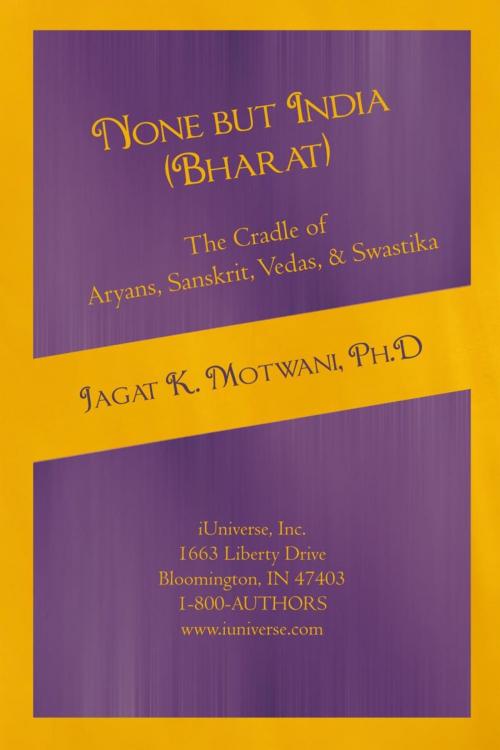None but India (Bharat) the Cradle of Aryans, Sanskrit, Vedas, & Swastika
Aryan Invasion of India’ and ‘Ie Family of Languages’Re-Examined and Rebutted
Nonfiction, Reference & Language, Foreign Languages, Southeast Asian Languages, Language Arts, Linguistics| Author: | Jagat K. Motwani Ph.D | ISBN: | 9781450261289 |
| Publisher: | iUniverse | Publication: | January 20, 2011 |
| Imprint: | iUniverse | Language: | English |
| Author: | Jagat K. Motwani Ph.D |
| ISBN: | 9781450261289 |
| Publisher: | iUniverse |
| Publication: | January 20, 2011 |
| Imprint: | iUniverse |
| Language: | English |
The divide between the North Indians and the South Indian Dravidians was created by the two British-initiated theories of the Aryan invasion of India (AII) and the Indo-European family of languages (IE). Both the theories AII and IE were mischievously engineered by the British, with their colonial and missionary agenda, guided by their world-known notorious policy, Divide and Rule.
According to the AII, Aryans invaded India in about 1500 B.C. and got settled in North and forcibly pushed dark-skinned Dravidians to South. Aryans brought Sanskrit and composed the Vedas. The Dravidian Tamil, Telugu, Kannada and Malayalam are the native languages of India, not Sanskrit.
With abundant historical irrefutable evidence, it has been established that the alleged invading Aryans were originally from Aryavarta (India) who had gone overseas earlier than 1800 B.C. for trade, and had established their Vedic kingdoms in several countries. Even Greece was colonized by the Indo-Aryans. When in trouble in about 1500 BC, some of them attempted to return to India, the land of their ancestors. The rest were culturally absorbed. The returning Aryans were mistaken as invaders because they were traveling in armored horsedriven chariots. It was their return to, not invasion of India.
Because of long cohabitation between Sanskrit-speaking Aryans and Europeans, as the result of Indian colonization, Sanskrit influenced several European languages, particularly Greek and Latin. Resulting philological resemblances prompted Sir William Jones to theorize the IE, that Sanskrit and European languages have a common origin. It has been proved that Sanskrit and European languages do not have a common origin and that there is significant resemblance between Sanskrit and the Dravidian languages, much more than between Sanskrit and European languages.
The divide between the North Indians and the South Indian Dravidians was created by the two British-initiated theories of the Aryan invasion of India (AII) and the Indo-European family of languages (IE). Both the theories AII and IE were mischievously engineered by the British, with their colonial and missionary agenda, guided by their world-known notorious policy, Divide and Rule.
According to the AII, Aryans invaded India in about 1500 B.C. and got settled in North and forcibly pushed dark-skinned Dravidians to South. Aryans brought Sanskrit and composed the Vedas. The Dravidian Tamil, Telugu, Kannada and Malayalam are the native languages of India, not Sanskrit.
With abundant historical irrefutable evidence, it has been established that the alleged invading Aryans were originally from Aryavarta (India) who had gone overseas earlier than 1800 B.C. for trade, and had established their Vedic kingdoms in several countries. Even Greece was colonized by the Indo-Aryans. When in trouble in about 1500 BC, some of them attempted to return to India, the land of their ancestors. The rest were culturally absorbed. The returning Aryans were mistaken as invaders because they were traveling in armored horsedriven chariots. It was their return to, not invasion of India.
Because of long cohabitation between Sanskrit-speaking Aryans and Europeans, as the result of Indian colonization, Sanskrit influenced several European languages, particularly Greek and Latin. Resulting philological resemblances prompted Sir William Jones to theorize the IE, that Sanskrit and European languages have a common origin. It has been proved that Sanskrit and European languages do not have a common origin and that there is significant resemblance between Sanskrit and the Dravidian languages, much more than between Sanskrit and European languages.















